The county of Kent, which lies in the very south-eastern part of England, is often referred to as the Garden of England. It refers to the fact that Kent has traditionally been dominated by agriculture. This is why Kent is home to many orchards, as well as hop fields.
Kent is also home to many of the most beautiful country parks in the south, such as Sissinghurst and the gardens around one of the country’s most beautiful castles, Leeds Castle.
Kent borders the counties of East Sussex, Surrey and Essex as well as Greater London. The Kent coast borders the North Sea and, of course, the English Channel and the Strait of Dover to the south. Kent is connected to mainland Europe via the Eurotunnel.
Kent has much that is considered typically British: small villages and towns with thatched cottages, quaint half-timbered houses, winding streets, cobbled streets and a flair that ranges from medieval to Victorian.
The coast offers many beaches, hiking and cycling trails, such as the 260-kilometer Saxon Shore Way, which leads from Gravesend in Kent to Hastings in the county of Sussex.In the south, the famous white chalk cliffs of Dover are enchanting, from where you can see as far as the coast of France in good weather.
Kent is home to such famous places as Rochester, famous above all for one of the great writers of English literature, Charles Dickens. The northern part of Kent is also home to one of the country’s most important cities: Canterbury, the seat and heart of the Anglican Church.
Sissinghurst Castle
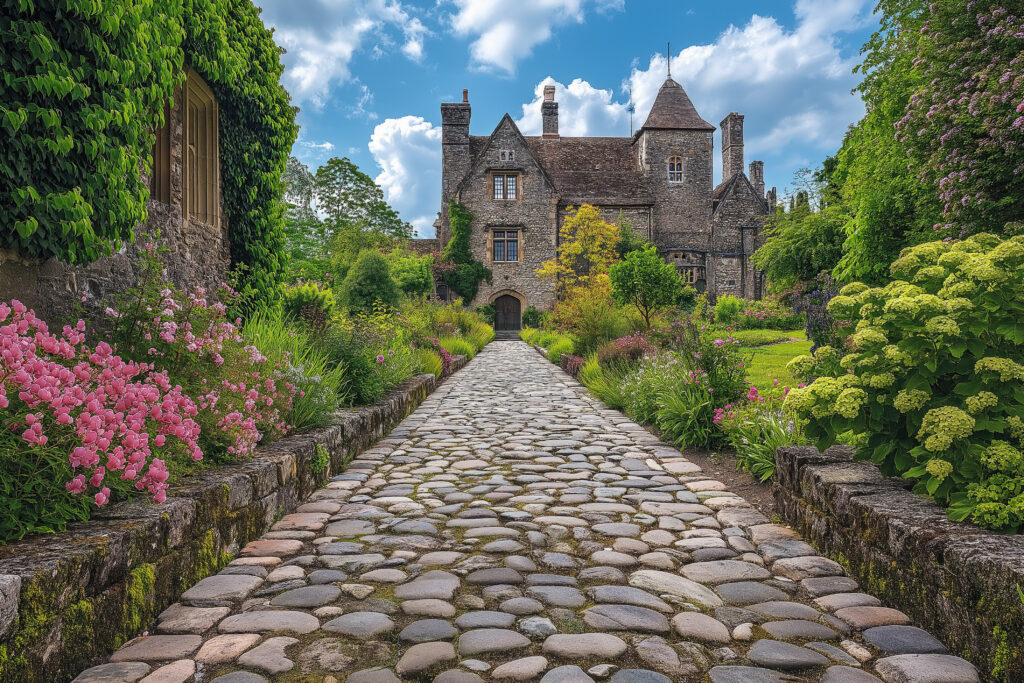
Originally, there was a pig farm on the site of today’s castle. After the Saxon farming family with the name de Saxingherstes became somewhat prosperous, a first small manor house with a moat was built here, of which nothing remains today.
A magnificent Renaissance-style house was built on the same site in the late 16th century. During the Seven Years’ War, French prisoners were housed in the building, who called it “Chateau de Sissingherst”, from which the current name Sissinghurst Castle originated.
In 1930, the poet Vita Sackville-West bought the estate and began to redesign the garden. She was assisted by her husband Harold Nicolson, a diplomat and writer. Harold’s architectural planning of the garden spaces and Vita’s colorful, lush planting of the gardens reflect the romance and intimacy of her poems and writings.
Take your time and stroll through the individual garden rooms at your leisure. The legendary “White Garden” is particularly impressive and from the garden tower you can enjoy a wonderful view of the surrounding grounds.
Dover
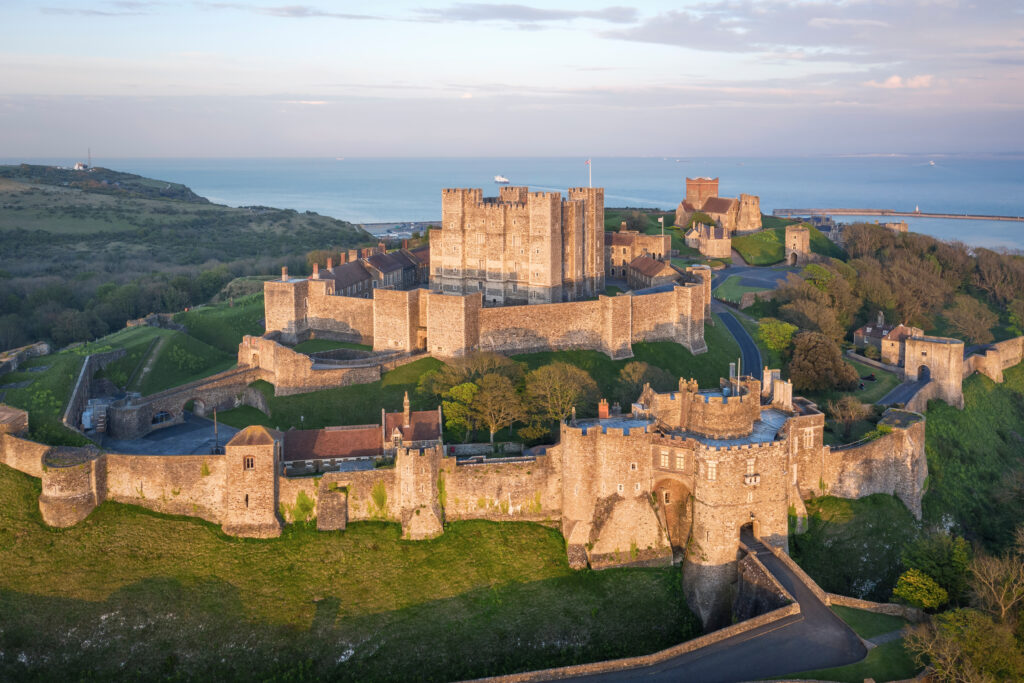
Dover has been England’s main Channel crossing port for more than 2000 years and is the most popular destination for ferries from Europe. Dover Castle, one of England’s most iconic castles, was built to guard ‘the gateway to England’ in the Middle Ages.
The White Cliffs of Dover are one of England’s most spectacular natural features and an official symbol of Britain. To appreciate their beauty and enjoy their special appeal, take a cliff walk along these dramatic cliffs and experience the amazing views across the English Channel and towards the French coast.
At the National Trust visitor center you can learn more about the area, its history and the rare flora and fauna that thrive on the chalky grassland.
From whichever direction you approach Dover, the castle looms over the town. It is a medieval castle that watched over the English Channel for 9 centuries. It’s great for a family day out. Step inside the Great Tower and be transported back to a medieval palace.
Explore the secret Napoleonic underground tunnels that were used as an infirmary during the Second World War. There is much to see at Dover Castle, now owned by English Heritage.
Ramsgate
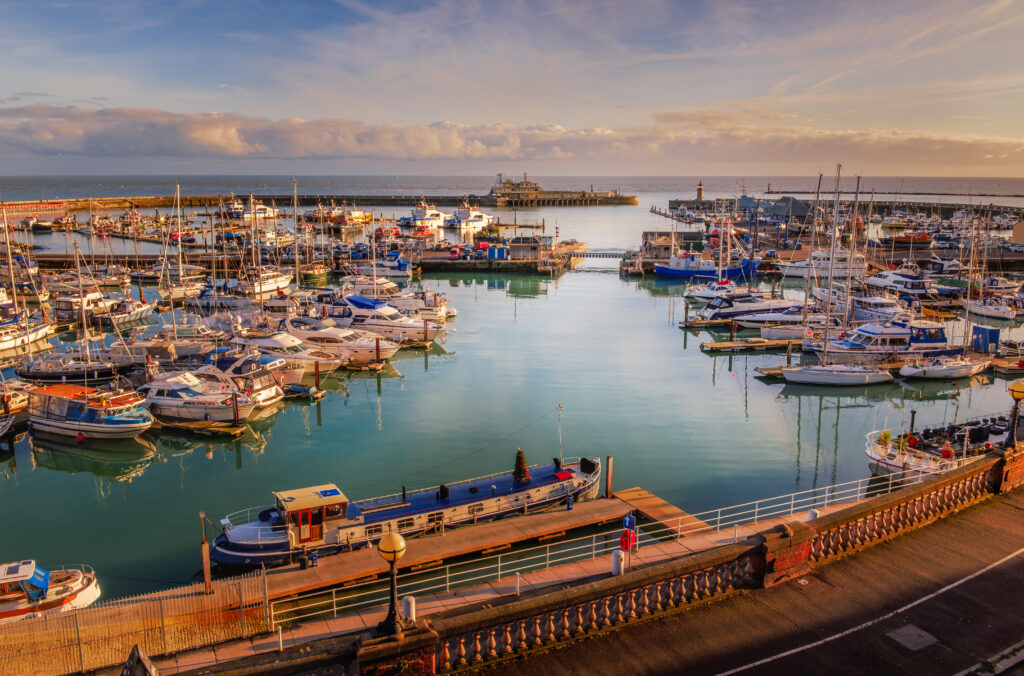
Perhaps being so close to Europe helps infuse Ramsgate with a cosmopolitan vibe. A bustling Royal harbour borders a yacht-packed marina, awash with history and overflowing with continental charm, it’s a must-see historic port.
South-facing Ramsgate is proud of its status as England’s only Royal Harbour and boasts its own Meridian Line. Five minutes and 41 seconds ahead of GMT, you’ll find it in the Maritime Museum, along with artefacts evoking the town’s rich heritage of fishing, shipbuilding and shipwrecks.
Ramsgate’s compelling past includes landings by Anglo-Saxons, Romans and Saints – it is also part of the historic Confederation of Cinque Ports. Fine architecture peppers the town – elegant Georgian terraces and impressive Regency villas.
Don’t miss the Pugin and St. Augustine Visitor Centre and Shrine, celebrating the first Archbishop of Canterbury – St. Augustine who landed at Ebbsfleet in 597AD bringing Christianity back to England.
In Ramsgate, the water is irresistible. Hop on a boat trip to spot seals basking on the Goodwin Sands or discover gorgeous beaches and bays. Bask yourself in the warmth of the exquisitely restored, Georgian Italianate Glasshouse, situated in King George VI Park.
Superb walking trails lead from the bustling port to the exhilarating cliffs; walk the coastal path to Broadstairs, or head south on the epic Saxon Shore Way to bird and wildlife-rich Pegwell Bay Country Park. What better way to discover the town and surrounding area than on an Active Ramsgate, walking route.
Broadstairs

The beautiful coastal town of Broadstairs enchants travelers with its seven bays. Where towels line the sand in the summer months, it is a little quieter in winter. But visiting the coast in the colder months has a charm all of its own: the fresh breeze that blows around your nose makes you forget the stress of everyday life.
The seven bays of Broadstairs offer something for everyone: Viking Bay is very central and very family-friendly, Joss Bay is great for surfers, Stone Bay is quieter, Louisa Bay has a small, cozy beach, Kingsgate Bay fascinates with its castle, Botany Bay has wonderful nature and Dumpton Gap offers one of the best walking routes at low tide to Ramsgate. Kingsgate Bay was actually called St Bartholomew’s Gate until King Charles II changed the name in 1683.
Kingsgate Castle, built in 1763 by Lord Holland, a British politician, is perched on the cliff and was used as a hotel until the 1950s. Today the castle is in private use. A steep staircase leads visitors to a quiet and secluded sandy cove below the walls, and the famous writer Charles Dickens was a frequent visitor to the small coastal town.
He took advantage of the peace and quiet and the good sea air to write his novels and spend large parts of his summer vacations here.
Sandwich
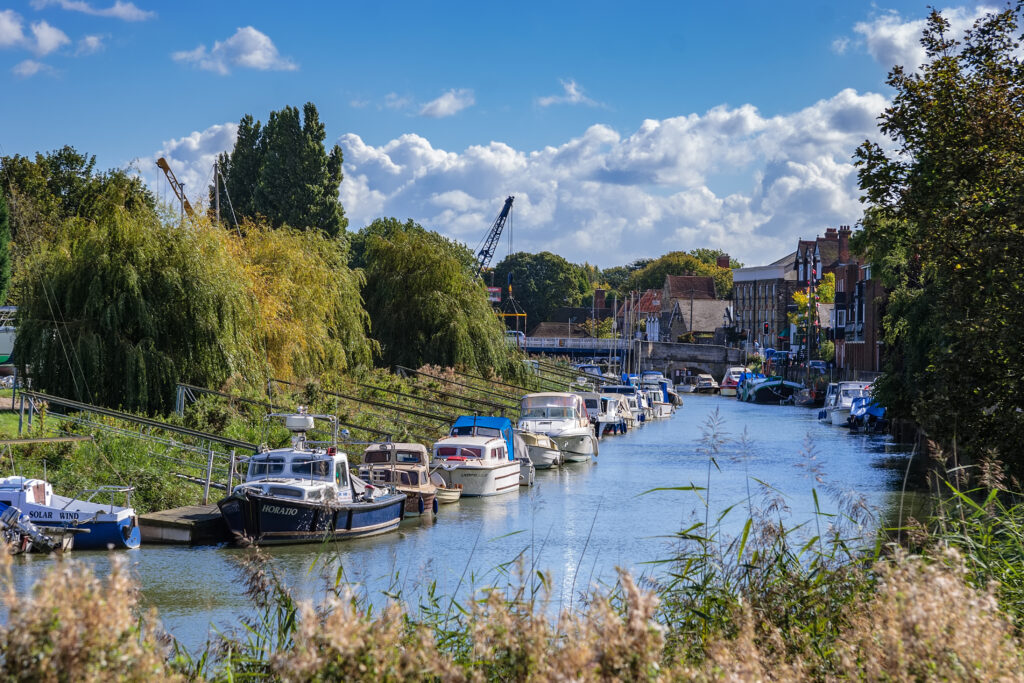
Sandwich in Kent is one of the best-preserved medieval towns in England. In the 13th century it was England’s main port for the export of wool, but in the 15th century the river silted up and trade moved along the coast to Deal. The town is now about 3km inland.
The entrance to the town is guarded by the twin towers of the Barbican Gate, built in 1539. It is a pleasure to explore the narrow winding streets of this medieval town.
Sandwich Bay stretches between Ramsgate and Deal; the area is made up of shallow sand, salt marshes and sand dunes and is of great ecological importance with protected areas and nature reserves. Three of the UK’s most prestigious golf courses are located here, the Royal Cinque Ports, Royal St Georges and Princes.
Walmer Castle is one of three castles built by Henry VIII along this stretch of Kent coastline in the 1530s. This charming Tudor castle by the sea has 8 acres of magnificent gardens and parkland.
The secret gardens of Sandwich are surrounded by ramparts. The 3.5 acres of gardens were designed by Sir Edwin Lutyens and Gertrude Jekyll. They were neglected for 25 years but have been restored to their former glory over the past 4 years and are now some of the finest gardens in Kent.
Rochester
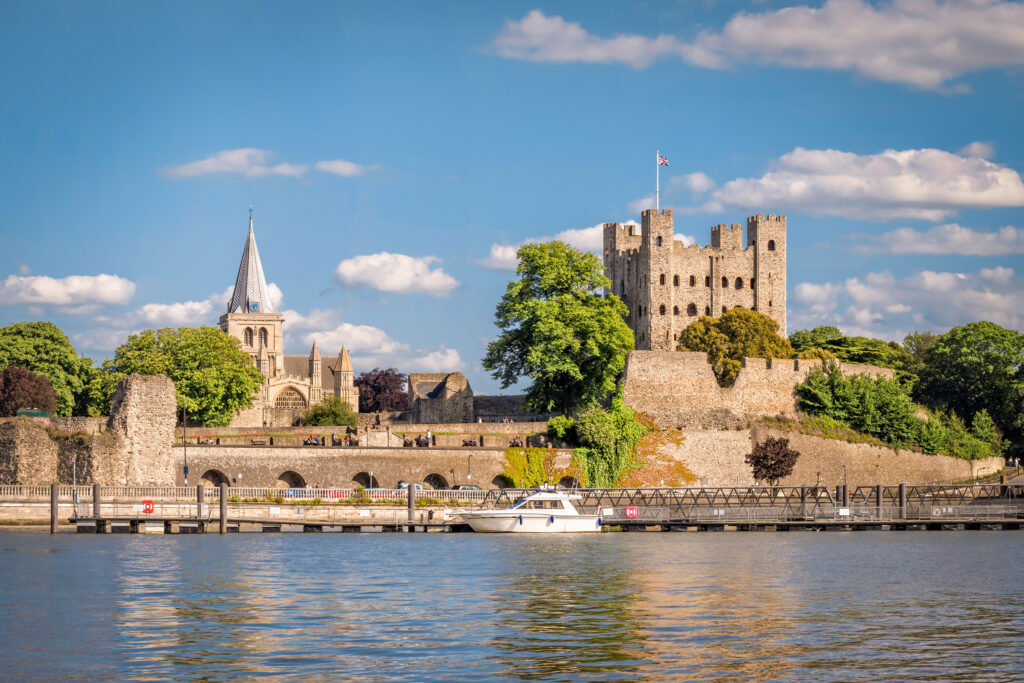
Rochester has a lot to offer with its historic old town, castle, cathedral, shipbuilding and its connection to one of Britain’s most famous novelists, Charles Dickens! Together with Chatham and Gillingham, the city forms the so-called Medway Towns. This is because the River Medway winds its way through all three and it is almost impossible to tell where one town ends and the next begins.
Rochester was founded by the Romans. With such a long history, it’s easy to imagine that there are plenty of sights to discover in Rochester!
The forerunner of the current cathedral was built in 604 AD. Rochester Cathedral, which stands on this site today, was built between 1080 and 1160, making it the second oldest cathedral in England.
Rochester Castle is located directly opposite the cathedral. The castle, built by the Normans, has one of the highest castle keeps in the country. At 34 meters, it offers an excellent view of the city and its surroundings and, of course, of the River Medway, which flows to the east of the castle.
If you take a look at the map, you will inevitably recognize the strategic importance of the town. It is therefore no wonder that Rochester has repeatedly been the target of enemy attacks throughout its history, most notably those of the Vikings.
Defense was therefore the order of the day and ships were built in the area for the first time in the 9th century. This heralded the era of shipbuilding on the Medway, which became so important for the development of Rochester, and indeed the Medway Towns as a whole. This history can be traced at the historic port in Chatham, the Historic Dockyard Chatham.
Chatham

Chatham is fascinating maritime destination with a history stretching back over 400 years. Famous seafarers Hawkins, Drake, Nelson and Gillingham born Will Adams would have known the area well. Always fearing invasion, Henry VIII constructed a dockyard at Chatham, now a major visitor attraction in Medway known as The Historic Dockyard Chatham.
The great British author, Charles Dickens moved to Chatham at the age of five when his father John Dickens worked in the Royal Navy pay office at the dockyard. The next seven years of Charles’ life were spent exploring the docks, Georgian Chatham and accompanying his father on long walks in the surrounding countryside.
Royal Tunbridge Wells
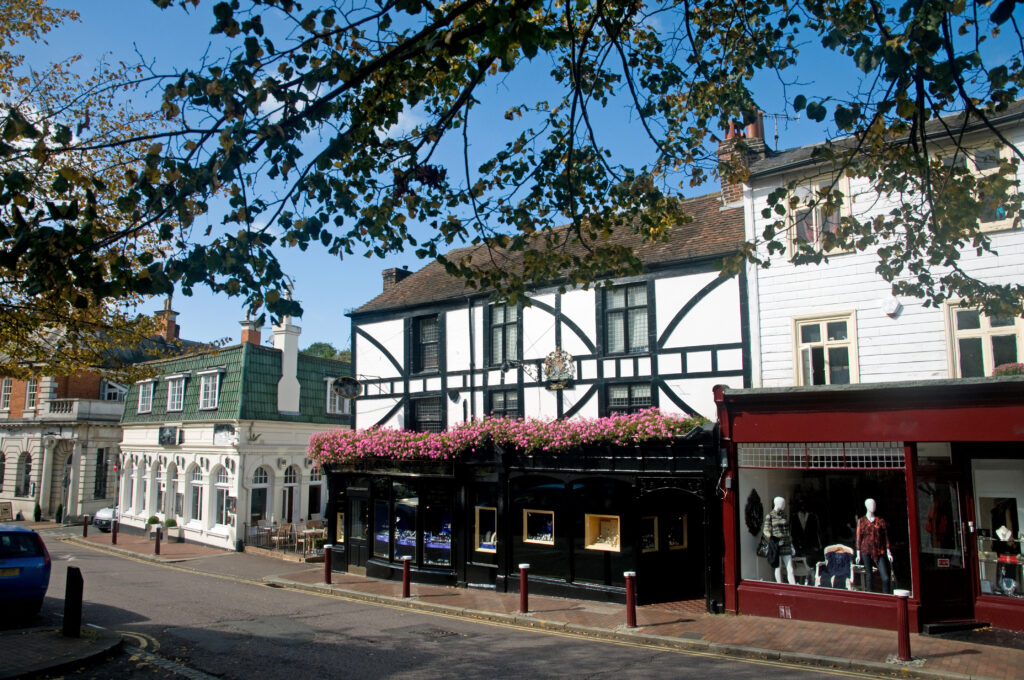
Royal Tunbridge Wells saw its origins as a spa town in 1606 when the healing springs were discovered by Lord North; news of the springs spread quickly and visitors came from all over to soak in the waters.
The spring is located in the Pantiles, the original part of the town, an avenue cobbled with curved roof tiles and lined with tall 17th and 18th century houses.
From Easter to September it is possible to taste the water from the ‘Chalybeate Spring’. Tunbridge Wells is a 30-minute train ride from London, and is a perfect stopover between London and the coast.
Tunbridge Wells is surrounded by a wide variety of gardens of all shapes and sizes. As well as the famous gardens such as Sissinghurst Castle Gardens, Great Dixter and Batemans, there are some lesser known gems waiting to be discovered. Gardens, castles, palaces and manor houses in Kent.
Deal
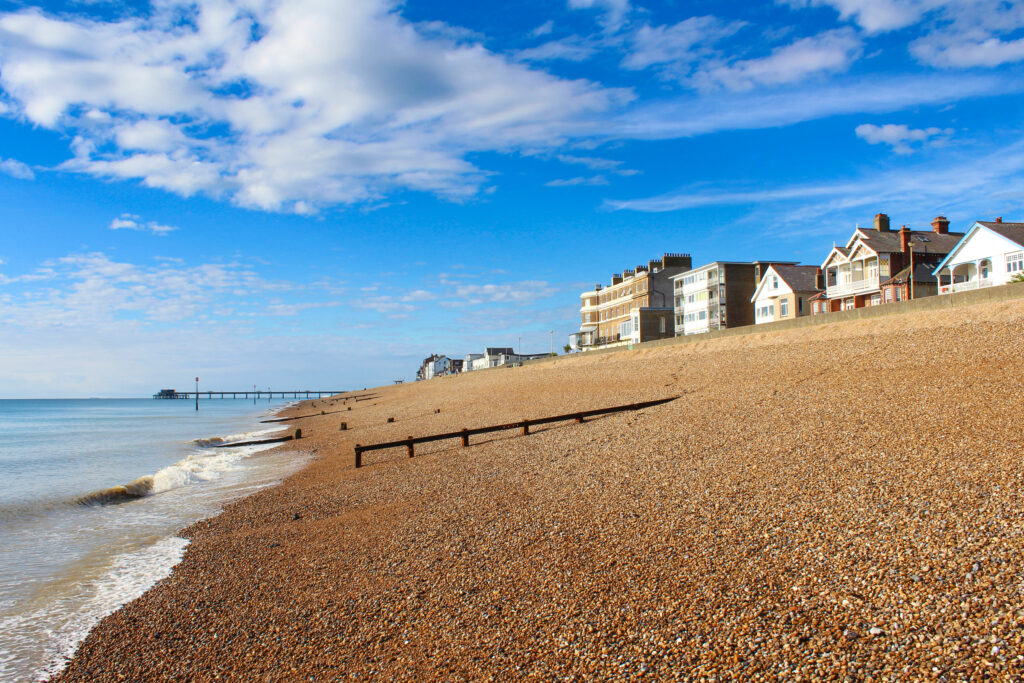
Deal in the White Cliffs Country is picturesque, quirky and one of the most charming seaside towns in Kent. It is steeped in history.
Take a leisurely stroll along the pier and enjoy a look back at a view that has barely changed for a century. Discover the history of Deal and explore the maze of narrow streets and alleyways, which was famous for its smuggling in the 18th century.
There are a variety of excellent restaurants. Sample the culinary delights of Deal Pier Kitchen or try fresh, locally caught fish in one of the waterfront bistros or the cozy restaurants in the city center.
If you love art, you’ll love Deal! Immerse yourself in the atmosphere of Deal’s art scene and browse through the art galleries and exhibitions. Enjoy a range of events, including Deal’s Festival of Music & the Arts, a popular two-week festival with a wide range of performances from street music to opera.
Whitstable
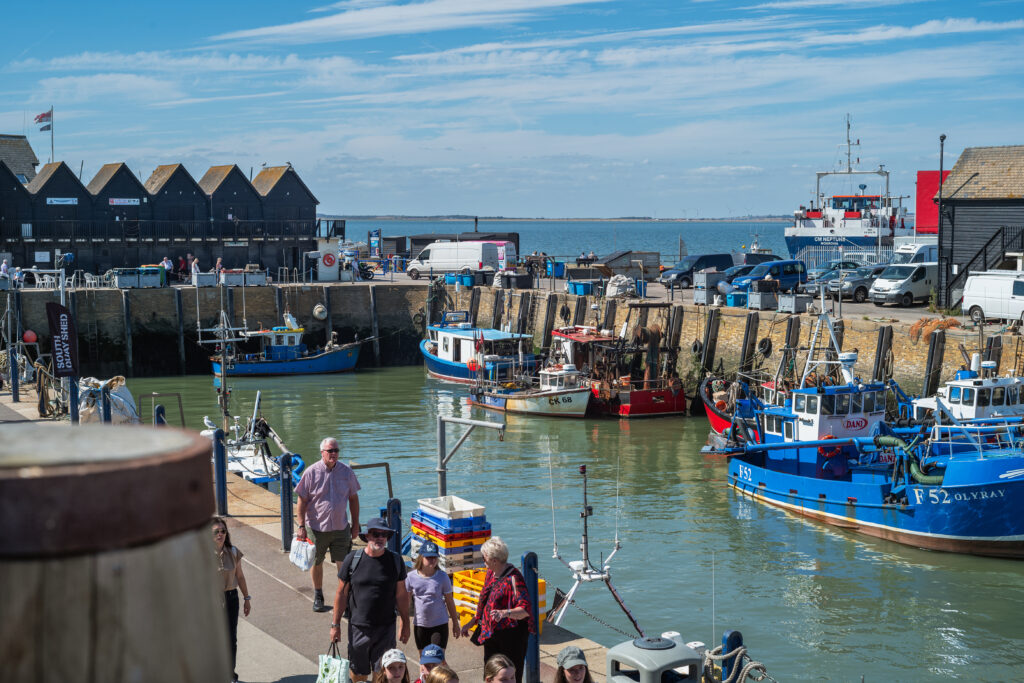
Whitstable is known for three things in particular and should therefore be added to any itinerary through the south of England. The typical flair of an English coastal town with its small streets, stores, restaurants and beach, an art scene to be proud of and, of course, oyster fishing.
Oyster fishing has been firmly established in Whitstable since the end of the 19th century. There is even an annual oyster festival, the Whitstable Oyster Festival – a very special attraction in Whitstable. Numerous cultural events take place at this time.
Visitors make a pilgrimage to Whitstable, celebrate and have a good time, sit in the harbor at the various outdoor seating areas and food stalls, visit restaurants or pubs and eat oysters and, of course, fresh seafood in general.
However, the harbor is generally a place that should not be missed on a walk through Whitstable and is simply one of the sights of Whitstable.
As well as the obligatory food stalls, the Oyster Shacks, which are open all year round, there is also the Harbour Market. It is an attraction in Whitstable mainly because of the small arts and crafts stalls, but also alternative, independent craft stores and galleries.
The High Street is of course the place to shop, but Harbour Street is also the place to be.There are numerous small independent stores along both streets where you can browse to your heart’s content for clothes, whether new or vintage, art and all kinds of souvenirs.
You can also stop off at a small café in between. The big chains have not yet found their way to this small town and the cafés have a quaint character.
Folkestone
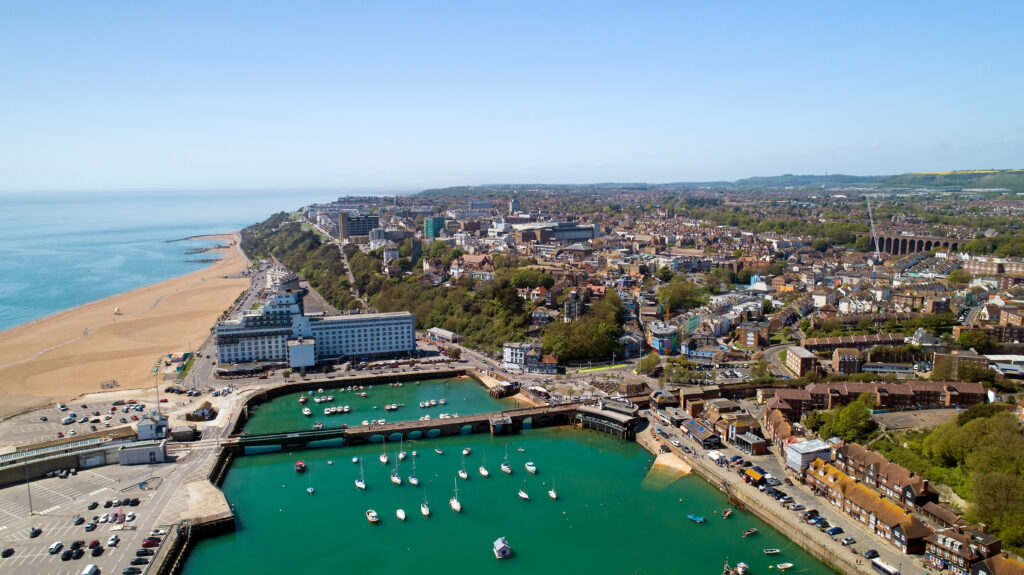
Folkestone is a charming coastal town in the county of Kent in the south east of England. Located on the English Channel, the town has a rich history and a unique maritime atmosphere. In the 19th century, Folkestone was a popular seaside resort for wealthy Londoners, which can still be seen in the townscape: Two large hotels were built back then, a promenade with great sea views and also a stage for musicians.
The port of Folkestone was once an important ferry port for connections to France and Belgium. Today, the port is still active, but primarily for pleasure craft and water sports. The Leas is a beautiful promenade that stretches along the cliffs of Folkestone and offers a magnificent view of the English Channel. It is a popular place for walking.
Folkestone has developed a burgeoning artistic scene in recent years, particularly through Creative Folkestone. This organization has helped to make the town a hub for contemporary art and culture.
Folkestone is also the location of the Eurotunnel, which is an important link between the UK and mainland Europe. The town is therefore used by many as a place to stay overnight before or after a crossing.
There are also numerous interesting sights in the area surrounding the town, such as the famous White Cliffs of Dover and many miles of beaches.
Aylesford
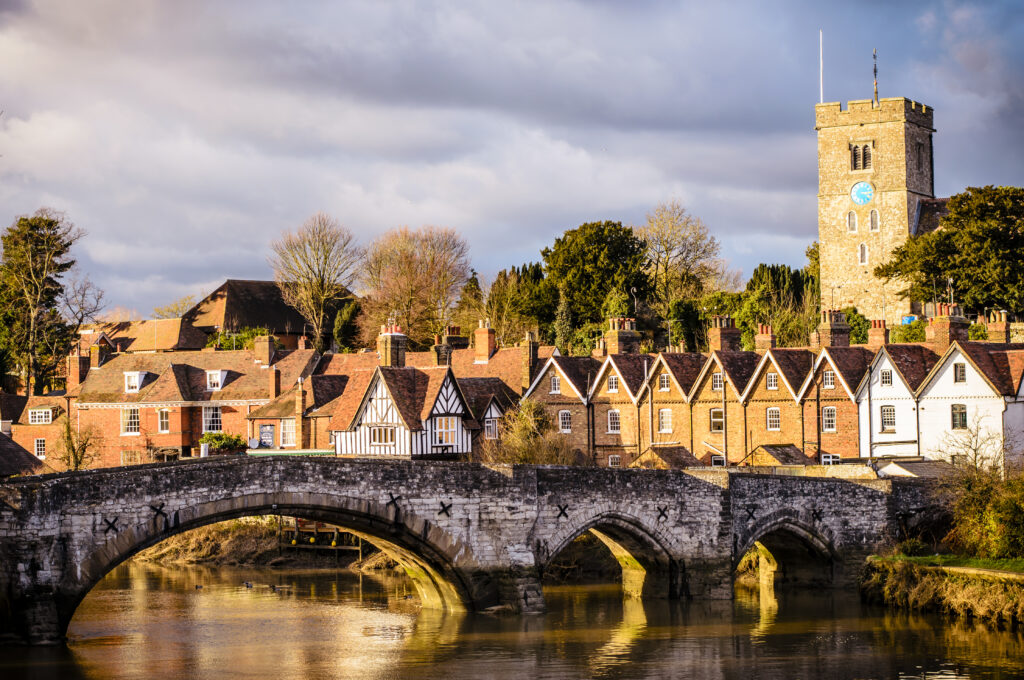
Aylesford is a large village on the River Medway, accessed via a medieval five-arched bridge. There has been human settlement here since Neolithic times, as evidenced by the long barrows of Kits Coty to the north of the village.
Today Aylesford retains its historic core, but the settlement has spread along the river in both directions, with railroad works and a busy shopping outlet bringing a modern bustle further from the historic centre.
Aylesford seems to have attracted famous battles throughout British history; Hengest the Jute fought the British leader Vortigern here in 455 AD, King Alfred defeated the Danes in 893 AD, and Edmund Ironside did likewise in 1016, pursuing the fleeing invaders all the way from Otford and killing many by the time they reached Aylesford. And the royals kept coming; William the Conqueror took Aylesford manor for himself after the Norman Conquest.
The most iconic structure in Aylesford is the 14th century bridge that still carries traffic across the River Medway into the village.
Close to the village is Aylesford Priory, a restored medieval monastic building of the Carmelite monks dating back to 1242. After the Reformation, the monastery was sold into private hands and the monastic buildings were converted into a luxurious mansion.
In 1949, the Carmelite order bought the site and refounded it, restoring many of the original medieval elements. The historical highlight is the pilgrims’ hall, which was built around 1280.
Tenterden
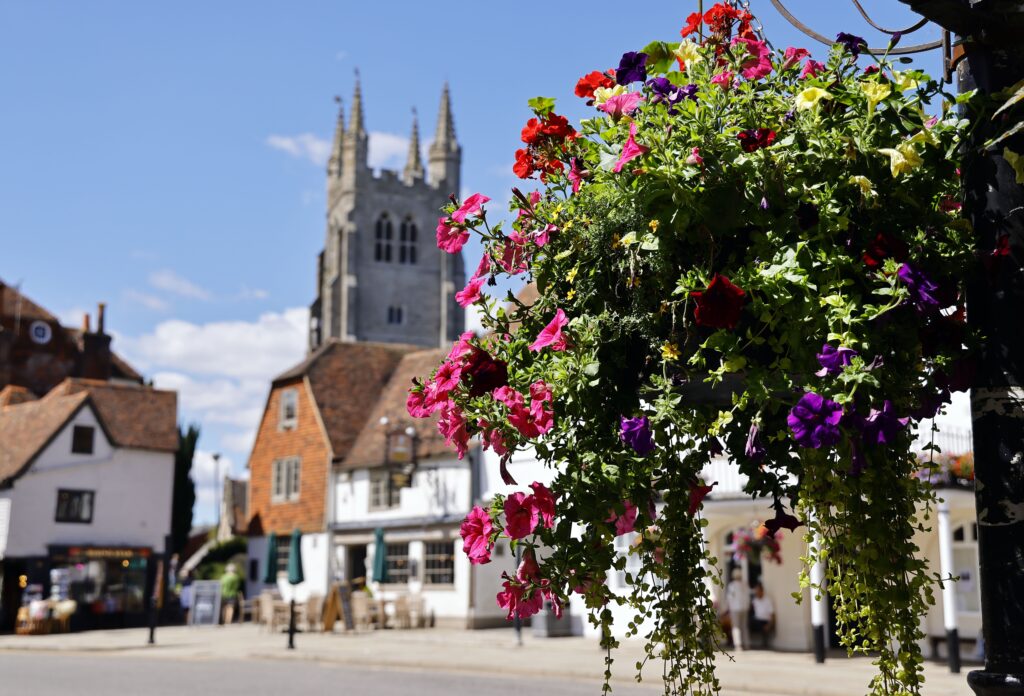
Nestling in the heart of the Weald of Kent, Tenterden, rich in history, has largely escaped much modern development and has consequently retained its charm. It has an attractive, broad tree-lined High Street, brimming with interesting shops that have something for everyone.
It is believed that the name Tenterden is derived from the Old English ‘Tenet Waraden’ which meant a clearing in the forest, belonging to the men of Thanet.
Tenterden was an important wool trading centre in the 13th century and became prosperous. It is difficult to believe today that Tenterden had access to the sea at Smallhythe, since the coastline has altered so much. Using the wood from the Wealden Forest as its source of timber, Smallhythe was a centre for shipbuilding and produced wooden ships that were large for the time.
In 1449 Tenterden was incorporated into the prestigious Federation of Cinque Ports, and was able to enjoy all the privilege and status which this position brought.
Dating from the 12th century the the distinctive tower of the Parish Church of St Mildred can be seen from the High Street. To get an insight into the history of Tenterden pay a visit to the local museum which has exhibits spanning one thousand years.
William Caxton, who pioneered printing in England is believed to have been born in Tenterden. The actress Dame Ellen Terry lived at Smallhythe.
Scotney Castle
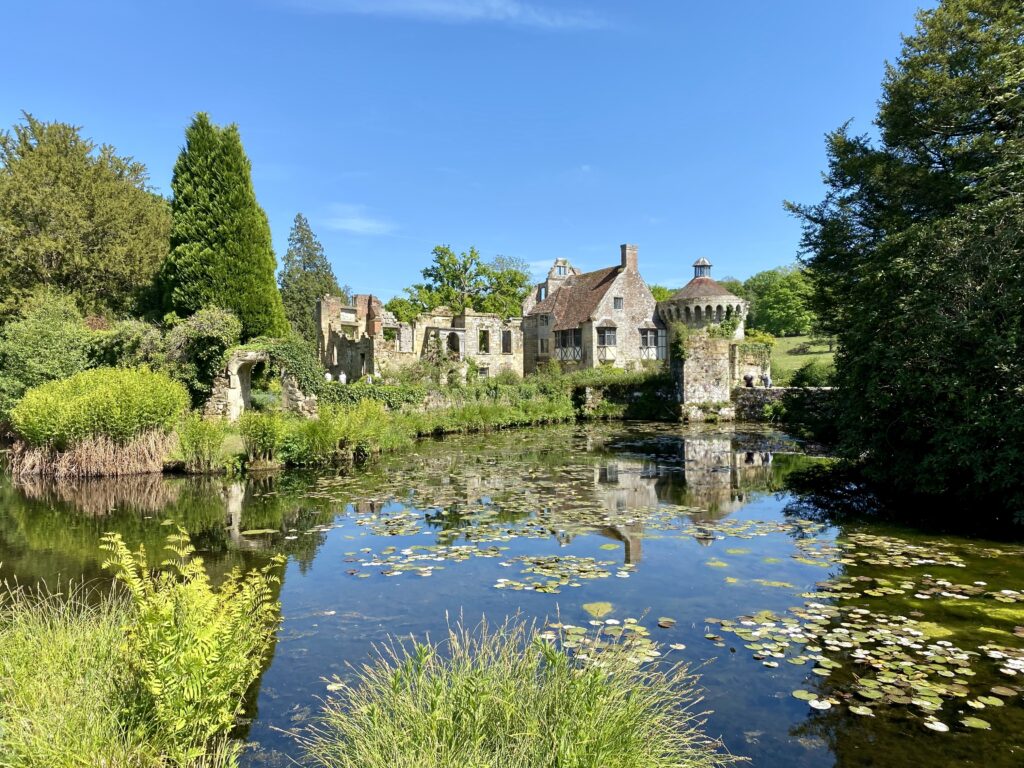
The house that can be seen today dates back to 1837 and the owner at the time, Edward Hussey III, had the house built from the sandstone of the old castle. The interior of the house is at least as magnificent. The wood paneling and some of the important furniture were specially designed for the house and give it a very special harmony.
What particularly distinguished the Hussey family was their enormous passion for collecting. But it is precisely this that proves to be very fortunate for today’s visitors. The condition for the National Trust to take over the house was that absolutely nothing could be removed or added.
As a result, the tour of the house offers a perfect insight into the life of a wealthy family over several generations. And you always get the feeling that the last occupant, Betty Hussey, has only just left the house to run a few errands.
Afterwards, take a stroll in the picturesque garden and take some time to explore the beautiful woodland and parkland.
Knole
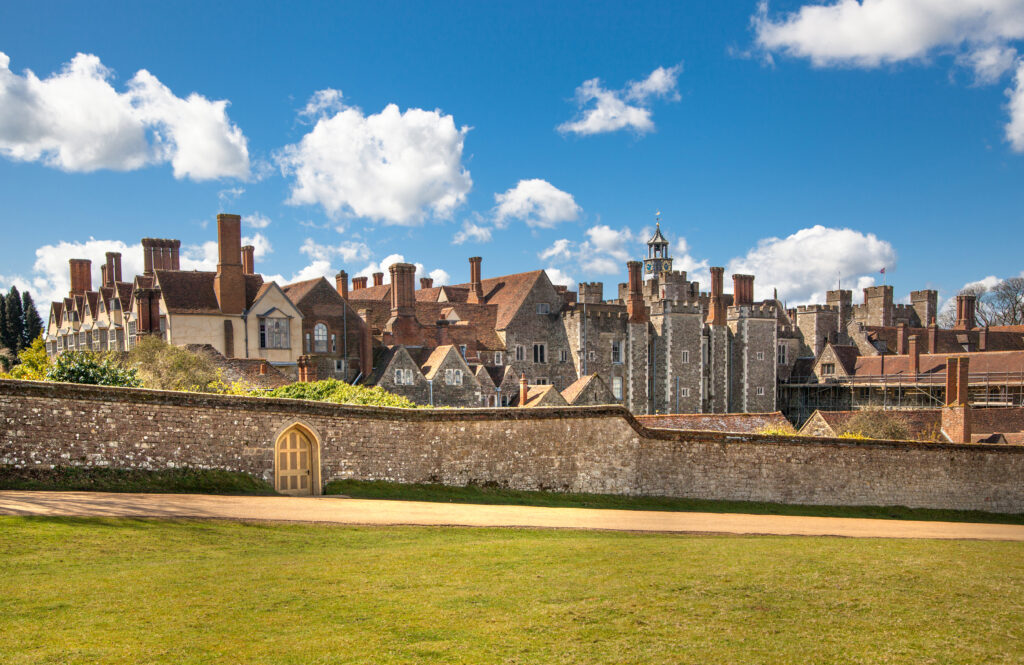
From an Archbishop’s Palace, a royal house to the Sackville family home. Knole has remained largely unchanged for 300 years. It was the birthplace of Vita Sackville-West and the setting for Virginia Woolf’s novel ‘Orlando’.
The park is the only remaining medieval deer park in Kent and it supports a herd of Sika and Fallow deer which are direct descendants of those which inhabited it in Tudor times.
The park features several areas of rare and fragile anthills on acidic grasslands. These anthills reflect the long history of no ploughing or farming within the park and generations of ants have lived in their ‘ant villages’ for about 700 years!
Wander through the park and discover the icehouse, listen out for the woodpeckers and admire the beauty of this timeless park, which has changed little since the early 17th century.
Leeds Castle
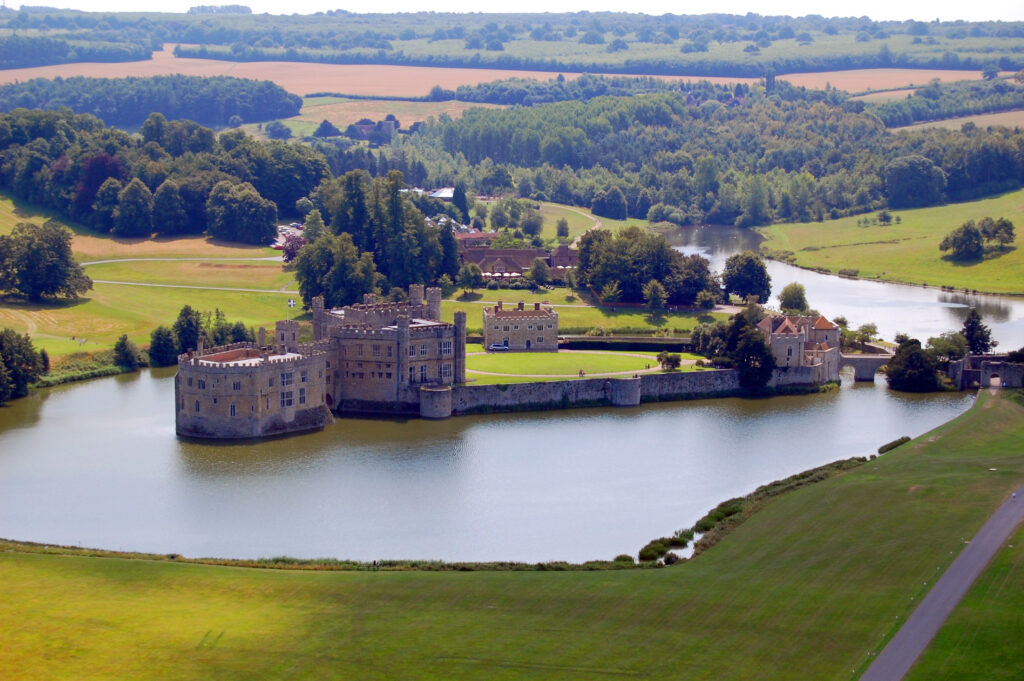
The origins of Leeds Castle go back to the time of the Anglo-Saxons, namely to the year 857, when they built a residence on this site. The Normans, who conquered England in 1066, then built a stone castle on this site for the first time.
Over the next few centuries, the Normans expanded the castle and it became a royal residence when, in 1278, Edward I became the first ruler of the country to set up camp in the castle for a time with his wife Eleanor of Castile, as he bought the castle for her.
In 1926, a new era in the castle’s history began when it was purchased by Lady Baillie. She was a wealthy heiress who made it her mission to maintain Leeds Castle. She had the castle remodeled and collected antiques and works of art as well as birds in the aviaries in the garden.
She also set up a trust, which took over the management of the castle in 1974. To this day, it ensures that the castle is preserved and remains open to the public. It is now one of the most popular excursion destinations in England.
Leeds Castle is a moated castle, as it is situated in the middle of a lake and was built on two islands. The castle is surrounded by a Mediterranean garden and a beautiful, typically English landscape park. Numerous footpaths invite you to take a stroll, sunbathe and have a picnic.
Margate
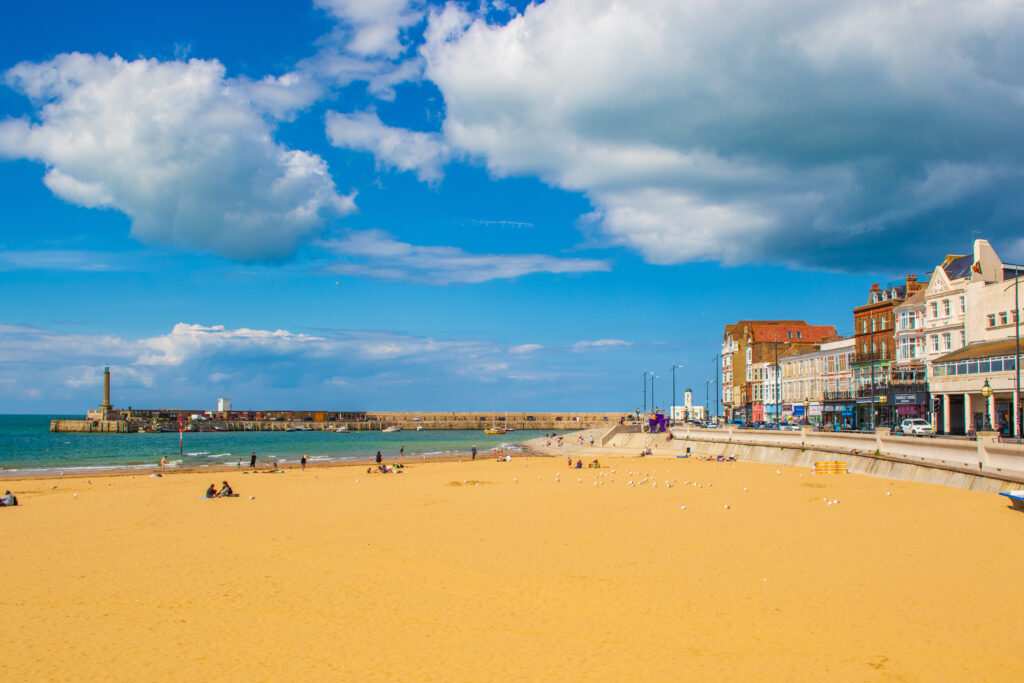
For more than 200 years, Margate has been attracting vacationers to its glorious crescent-shaped sandy beach. This timeless English seaside town on the Kent coast combines good old world charm with 21st century culture. Before the age of railroads, Londoners came to Margate by sea, on steamboats moored at the stone jetty known as Margate Pier, built in 1815.
The Turner Contemporary is the leading art gallery in the South East of England. It opened in 2011 and inspired by JMW Turner, the gallery presents contemporary and historical art in a beautiful seaside setting. The gallery is located on Margate’s promenade, exactly where Turner lived when he visited the town.
Dreamland was the UK’s original amusement park and reopened in 2015 after being stylishly restored and recreated. There are retro fairground rides, classic slideshows and all the delights of a British seaside vacation.
In Margate’s Old Town you’ll find chic eateries, galleries, antique stores alongside traditional seafood stalls and fish and chip stores. The cobbled streets are full of unique stores showcasing the work of local artists, and the café culture and street markets make it well worth spending some time here.
Faversham
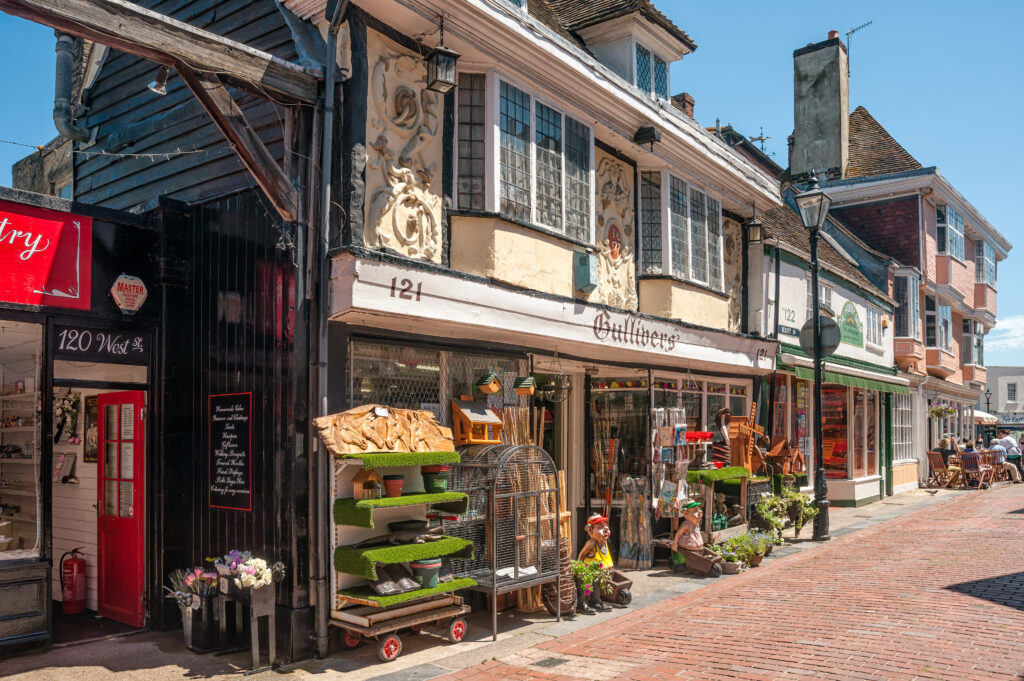
Faversham, the oldest market town in Kent, is steeped in history and sits on a winding stream. With an amazing selection of independent stores, fascinating sights, walks and a reputation for good food, Faversham is the perfect place to relax and enjoy a short break.
Faversham dates back to pre-Roman times and is mentioned in the Domesday Book. By 1900, after 400 years of manufacturing gunpowder for famous battles such as Trafalgar and Waterloo, Faversham had become the center of the British explosives industry. Over 400 listed buildings bear witness to Faversham’s industrial past and make the town a must-see on any historical tour.
Much of the area to the south of Faversham lies within the North Downs Area of Outstanding Natural Beauty, while to the north are nature reserves and Sites of Special Scientific Interest. The market town of Faversham is Kent’s enchanting destination for day walks and walking vacations, offering the chance to enjoy good food and drink while admiring some of the county’s most beautiful scenery.
Regular and popular events in Faversham continue to delight visitors who succumb to the charms of this Kent town – Secret Gardens, Open House, Faversham Hop Festival and Carnival to name but a few.
Canterbury
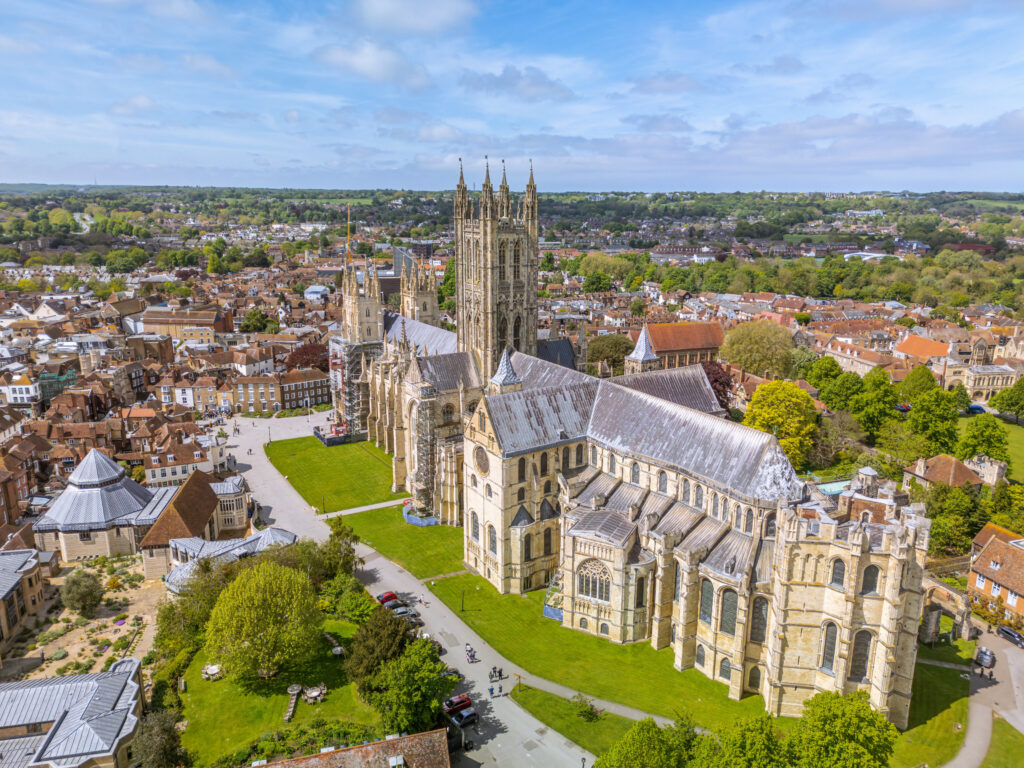
In the very south of England, and only around 90 kilometers southwest of the capital London, lies the historically charming city of Canterbury. It is the ideal destination for a city break in England.
The small town invites you to go sightseeing: traces of the Middle Ages can be seen on every corner. This makes Canterbury seem a little enchanted. The two-armed river, the Stour, which meanders romantically through the town, also contributes to this.
Although the city is quite small, it has a cosmopolitan feel, as the heart of the Anglican Church of England beats here. The Archbishop of Canterbury, the spiritual leader of the Anglican Church of England, is also based here.
Anyone spending a vacation in Canterbury will be confronted with the history of the city at every turn. The settlement of the area, in the middle of the two arms of the River Stout, dates back to the Palaeolithic Age.
Canterbury Cathedral is a popular tourist attraction! It is still the seat of the Archbishop of Canterbury, who presides not only over the Church of England, but also over the Anglican Church worldwide.
The cathedral itself, together with the nearby ruins of Saint Augustine’s Abbey and Saint Martin’s Church, has been a UNESCO World Heritage Site since 1988. As it stands today, it is no longer the original church building from the sixth century AD.

